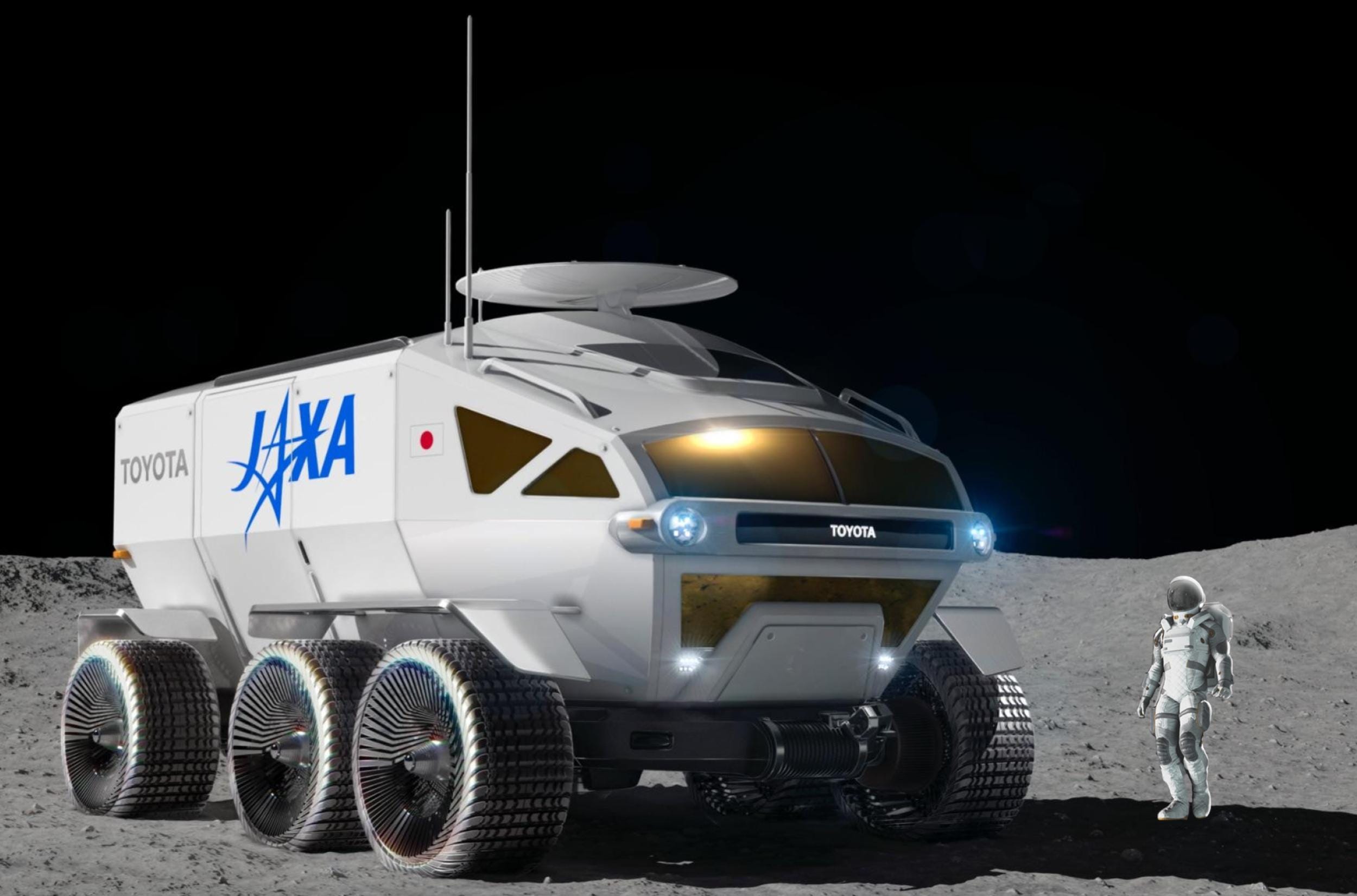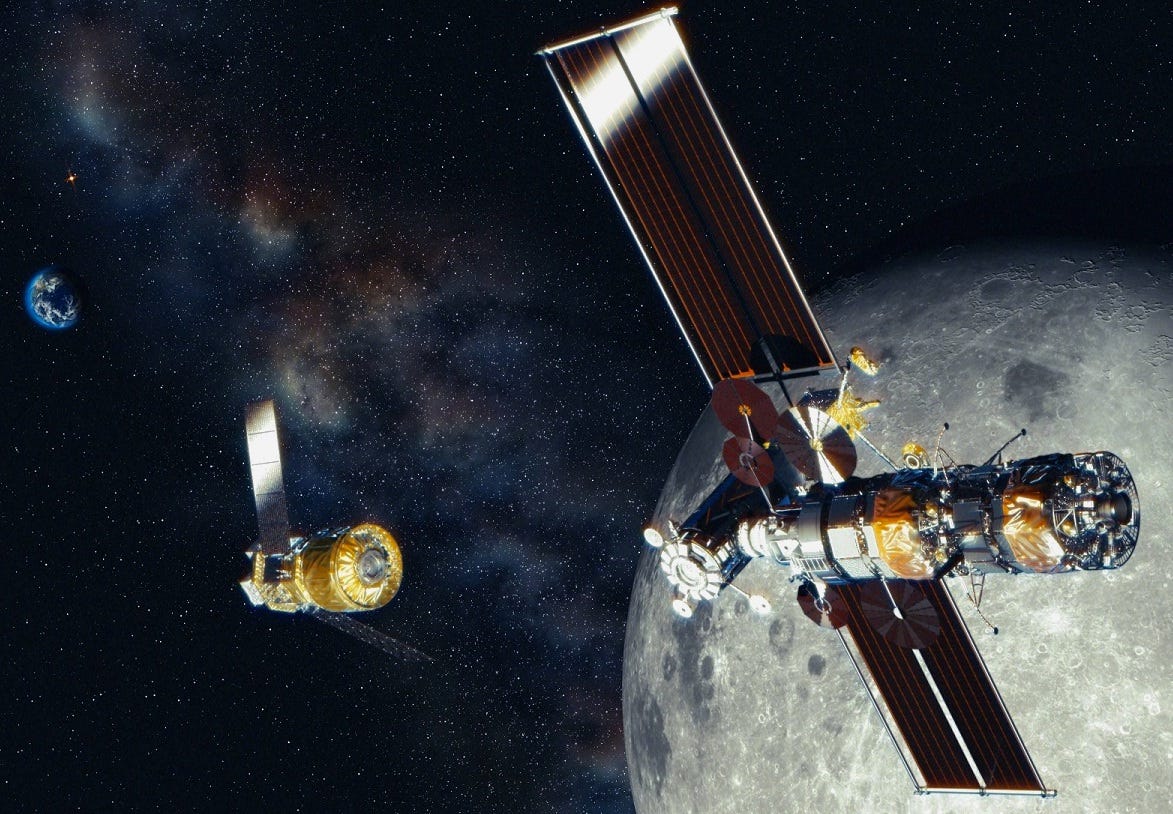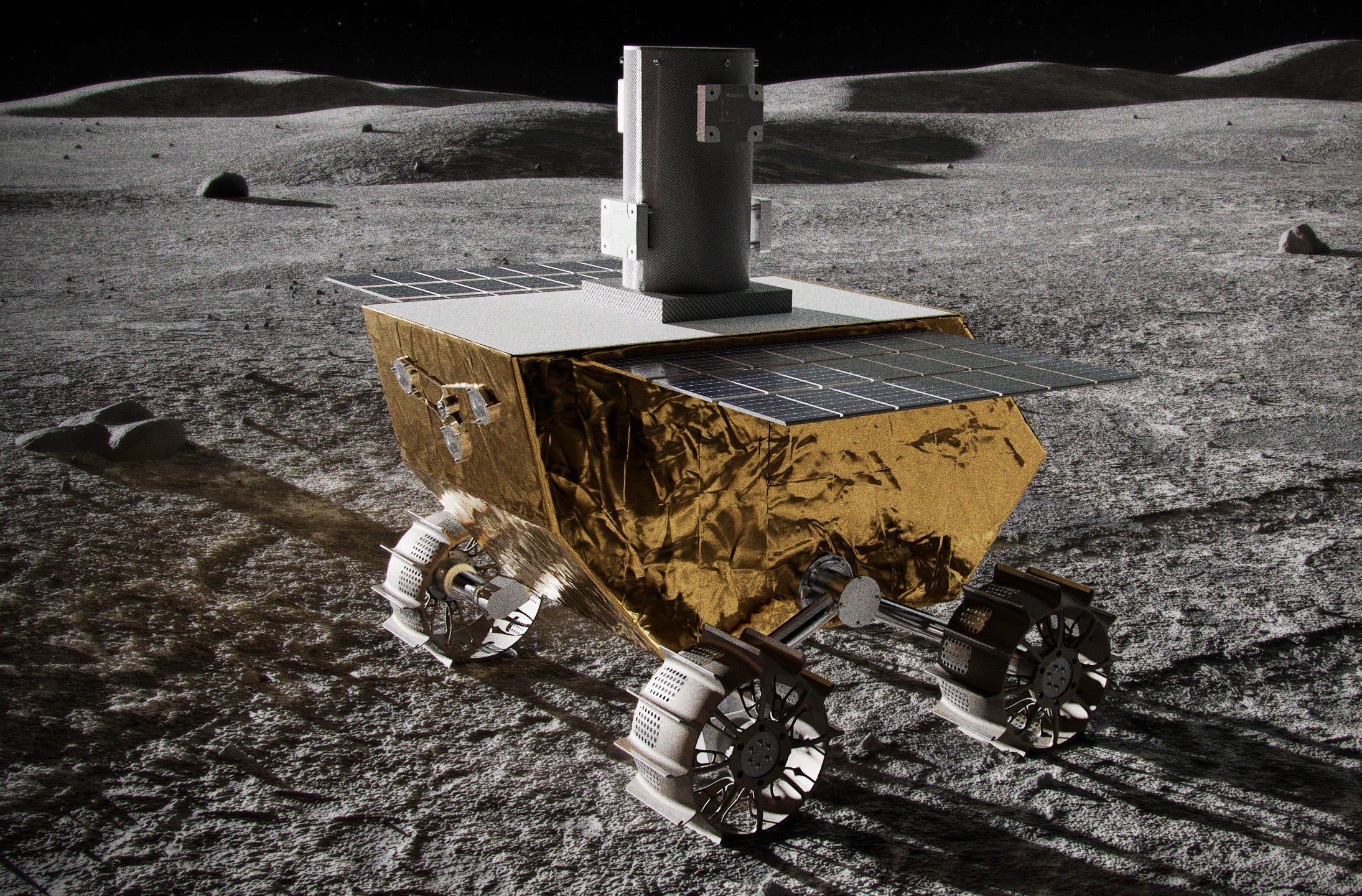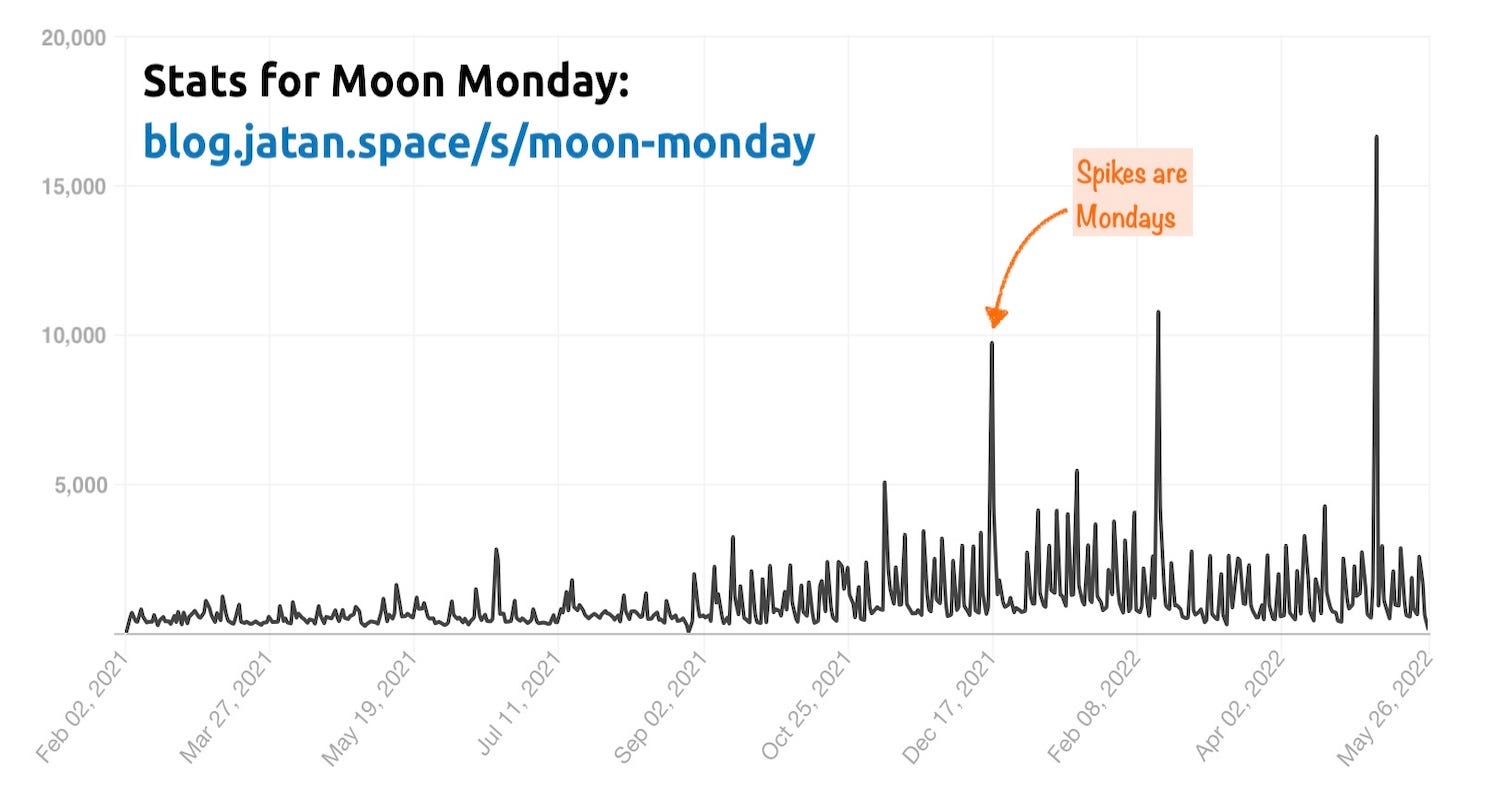Moon Monday #79: A Japanese landing on the Moon, a good Gateway, Lunar Outpost rovers and more updates
A Japanese astronaut will land on the Moon with NASA’s help
On May 23, the U.S. and Japan extended their collaboration on Artemis human lunar exploration from the NASA-led Gateway space station to the Moon’s surface. In addition to the previous arrangement of providing seats to Japanese astronauts on Gateway in return for the country’s crucial contributions to said station, the U.S. now intends to have a Japanese astronaut on an Artemis mission to the Moon’s south pole.
This development comes after Japanese Prime Minister Fumio Kishida announced a revised national space policy roadmap last year, which made it a priority to put “Japanese boots on the moon” by the late 2020s. Also last year, Japan’s space agency JAXA announced a plan to recruit new astronaut candidates for the first time in 13 years. The selected astronauts, to be announced later this year, will be sent either to the International Space Station or the lunar Gateway and surface.
The NASA announcement also mentions the potential inclusion of “Japan’s lunar rover” on Artemis surface missions, presumably referring to the JAXA-Toyota autonomous, crewed pressurized rover. Note that the upcoming Artemis Lunar Terrain Vehicle, as versatile as it maybe, is the less capable type of the two rovers in Artemis Base Camp, which aims to build the infrastructure necessary for at least a few astronauts to live for long periods on the Moon. The other is a pressurized, habitable rover, which would enable astronauts to explore the Moon’s south pole up to 45 days at a time. It would seem that Japan’s rover is a candidate for the same. The aforementioned revised Japanese space policy roadmap also urges development of a crewed lunar rover and other systems essential for human lunar activities.
Update from JAXA’s presentation at the LEAG 2022 Annual Meeting: Their rover is being designed to work on the Moon for at least 10 years, and cumulatively travel more than 10,000 kilometers. It can even enter small permanently shadowed regions if traverse routes involve slopes less than 20 degrees.

Gateway’s collaborative goodness
After Gateway launches in late 2024 as two combined U.S.-built modules—the Power and Propulsion Element (PPE) and the Habitation and Logistics Outpost (HALO)—on a SpaceX Falcon Heavy rocket, the station will attain its operational unique lunar orbit in 2025. Extending Gateway’s capabilities starting 2027 will be modules built by other countries like Japan, Canada and Europe, each of which will get crew opportunities onboard in return for their contributions. NASA seems to be successfully extending the collaboration model of the International Space Station to the Gateway.
In return for seats to Japanese astronauts on Gateway, the specific arrangement of which will be formalized later this year, Japan will provide life support systems to the station’s International Habitation module (i-HAB), which includes space for crew to live, work, and conduct research. Japan is also providing batteries, thermal control systems, and imagery components for i-HAB. These capabilities will reduce the Gateway’s logistical supply demands, allowing it to sustain crewed and uncrewed operations for much longer. Moreover, Japan is developing the advanced HTV-X spacecraft to supply cargo to the Gateway.

Canada has a similar arrangement with NASA to get two crewed lunar opportunities for Canadian astronauts—one seat on Gateway and one on Artemis II—in return for Canada providing the Gateway’s highly autonomous Canadarm3 robotics servicing system. Similarly, Europe has bagged at least three Gateway seats for their astronauts in return for ESA contributing the Orion spacecraft’s critical service module and the Gateway’s i-HAB habitation module as well as the ESPRIT communications & refueling module.
Despite Gateway’s collaborative benefits of letting multiple nations grow their lunar technologies and deep space operational experience, there’s a strong resistance in space communities to the very idea of the station being any useful. Bob Mahoney, a Space Shuttle spaceflight instructor, clears several misconceptions regarding Gateway in a comprehensive article and convincingly argues that the Gateway’s foundational idea is worth preserving, chief of which is its ability to be a servicing facility for inbound and outbound deep space (and lunar) spacecraft.
My takeaway from the article is that Gateway is best seen as an independent deep space campaign catering to numerous objectives rather than just a tool to the lunar surface. From the lens of this non-U.S. citizen, I also think such good faith international collaborations often outlast entire programs and specific projects while benefiting areas beyond space exploration.
Lunar Outpost, the little Moon rover company that’s growing up
Last week Lunar Outpost announced they’ve raised $12 million in seed funding, which will help them launch a bigger class of autonomous lunar rovers, improve existing offerings, and build more testing and manufacturing facilities. This is a good time to list everything Lunar Outpost has been up to in the Moon-sphere for context.
- Intuitive Machines’ second Moon landing mission, launching in mid-2023 as part of NASA’s CLPS program, will deploy Lunar Outpost’s MAPP rover on the Moon’s south pole. The autonomous, rugged rover will test the first 4G/LTE communications system on the Moon. On the same mission, the rover will collect lunar soil samples for NASA to transfer its ownership to the agency (but not bring to Earth). The move is NASA’s first step in incentivizing the industry to build sample extraction technologies and setting precedence for resource use under the Artemis Accords.
- Intuitive Machines’ third (CLPS) Moon mission will land in the magnetic swirl of Reiner Gamma in 2024 and deploy a Lunar Outpost rover., which will drive up to two kilometers over 13 Earth days. It will help scientists study the swirl by determining its composition and mapping the strength and direction of magnetic fields on its surface, complementing observations from past orbiters. The mission will help us better understand the Moon’s past magnetic field as well as the effects of solar wind and bombarding micrometeorites on planetary bodies across the solar system.

- One of the bidders of NASA’s upcoming versatile Artemis Lunar Terrain Vehicle for astronauts is Northrop Grumman, who has partnered with Lunar Outpost to build the rover.
- Lunar Outpost has signed a Memorandum of Understanding (MoU) with Luxembourg’s ‘Made in Space Europe’ to equip their rovers with the latter’s advanced robotic arms. The partnership is to enable sample collection on the Moon, perform scientific analysis and support commercial operations.
- One of the large rovers Lunar Outpost intends to develop thanks to the new funding is the design that forms the basis of Masten Space’s Rocket-M rocket mining system, which aims to rapidly extract large quantities of water ice and other resources from permanently shadowed regions on the Moon’s poles.
More Moon
- The fully stacked SLS rocket will head back to the launchpad on June 6 for another wet dress rehearsal test attempt starting June 19. If the test is successful this time around, NASA could launch the Artemis I mission in late August at best.
- In an update on the webpage announcement regarding their Moon to Mars objectives, NASA acknowledged the short public feedback time they initially provided but then went on to extend it by only 3 days..
- The second stage of the SLS rocket to be used on the first Artemis crewed landing mission in 2025 is taking shape in ULA’s factory.
A Moon Monday update
I’m so happy and proud to share that Moon Monday is listed as a resource on the websites of the revered Lunar-L Moon exploration and science community as well as the NextGen group of young lunar scientists. ^_^
Here are the webpage traffic stats for Moon Monday:

To fellow and aspiring niche writers, this is what showing up every Monday can do. I know this is humble growth but for a niche, independent creator who doesn’t make videos or podcasts and only writes, I’m happy.
This is a good time for a reminder that I’m publishing this newsletter in individual capacity and making it free to access. Please share Moon Monday with a relevant person or audience to help the newsletter reach more lunatics. I suck at social media marketing, and hate every time I need to do it, so help is definitely appreciated!
If you or your organization would like to sponsor Moon Monday, email me. I’m offering discounts to non-profits, academic institutes and research labs.
Thank you Epsilon3 for sponsoring this week’s Moon Monday.
Thanks also to Joseph J. Biernat for supporting my independent writing.
